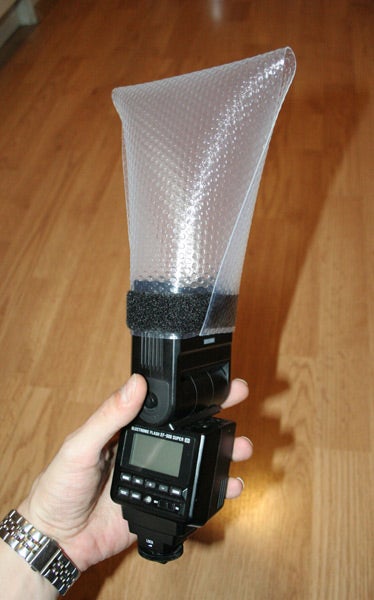In a recent post, we discussed ways to do macrophotography if you don't have a dedicated macro lens.
Now, lets talk about lighting those extreme close-ups.
While you can use continuous light, such as a desk lamp, you might not have that option if you are shooting outdoors, or if the lights you have won't permit a fast-enough shutter speed to avoid blurring.
One of the best ways to do that is through camera flashes, but you are going to need to diffuse the light to make it flattering, as well as work well up close.
One low-budget way to do it is to use a Pringles potato-chip can as a snoot/diffuser for the pictures.
A Pringles can is particularly suited for this task because the inside of the canister is silver colored, making it more reflective. It also has a clear cap, into which you can put diffusing material to soften the light.
Plus, Pringles don't leave the same greasy residue behind like traditional potato chips.
There are multiple tutorials online for how to make this rig, but here's how I made mine.
First, I picked up some Pringles at the local Walmart for just under $2, and had a nice snack at work for a couple days.
Then, after sweeping all the chip crumbs out of the tube, I cut out a hole in the side about a quarter-inch from the bottom that was the same dimension as the flash head. While some people cut away the cardboard completely, I chose to leave it as two flaps to better grip the flash head.
While some people will mount the flash in the back, I found the side mount is better, as the head is straight up, and you can angle it to light the subject in front of the lens. The other way requires sculpting the tube into a particular shape, which only works if you are going to use one particular lens for your macro shoots. I personally prefer to keep my options open.
For my diffusion panel, I put a circle of copy paper in the cap. After making sure it worked, I then put black duct tape on the outside to give it a relatively professional look.
This is how the rig looks when on the flash and camera, before being covered in duct tape.



